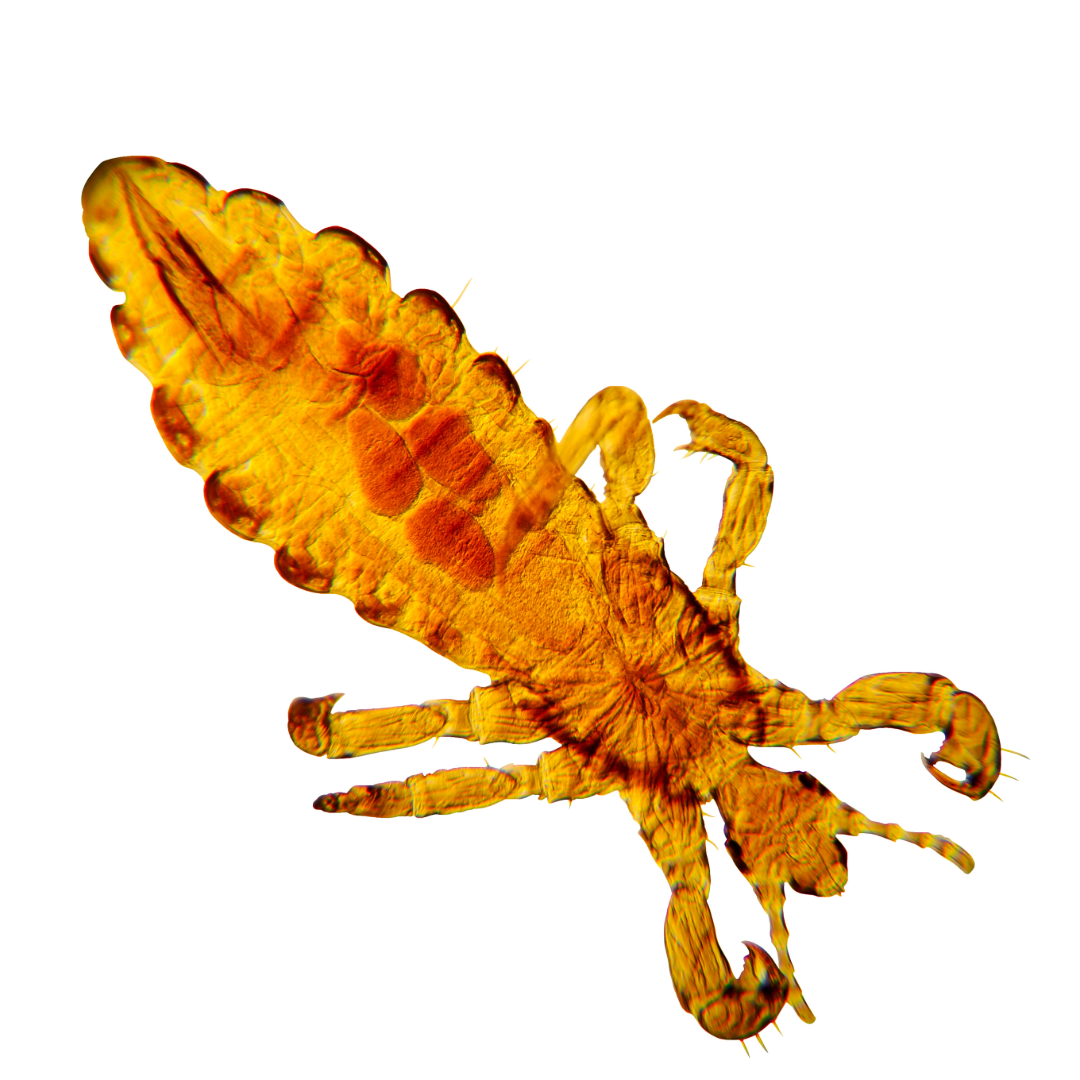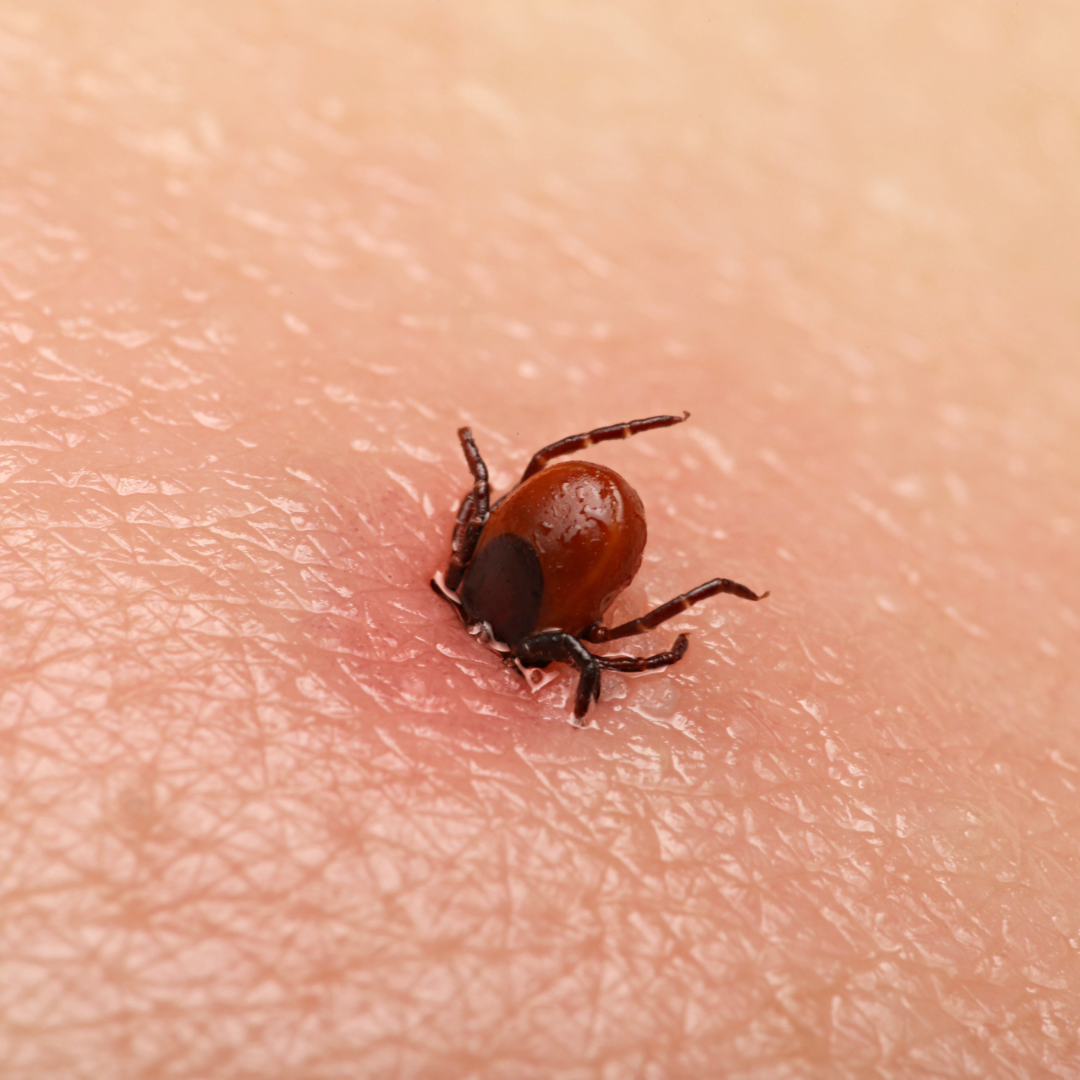Lice and ticks are tiny pests that can wreak havoc on our lives in different ways. While both may seem like minor nuisances at first glance, understanding the distinctions between them is essential for effective management and prevention.
In this comparison, we’ll delve into the differences between lice vs. ticks, exploring their anatomy, habitats, health risks, and preventive measures. So, buckle up as we uncover the fascinating characteristics of these pesky parasites.
Lice vs. Ticks: Anatomy and Biology
From lice clinging to hair strands to ticks’ life cycles spanning multiple stages, we’ll explore what makes these pests tick—quite literally.
Lice
Lice are tiny insects that thrive in the hair and skin of both humans and animals. Their flat, wingless bodies are perfectly designed for gripping onto hair shafts and feeding on blood.

Typically light brown or grayish in color, lice blend in with their host’s hair, making them difficult to spot. Despite their small size, often no larger than a sesame seed, lice can reproduce rapidly and cause significant discomfort through itching and irritation.
The life cycle of lice encompasses three main stages: nit (egg), nymph, and adult. Nits are small oval eggs firmly attached to hair shafts near the scalp. Nymphs resemble miniature adults and undergo multiple molts before reaching maturity.
Adult lice mate and lay eggs, with females capable of producing numerous offspring throughout their lifespan. Generally, the entire life cycle of lice, from egg to adult, lasts only a few weeks under optimal conditions.
Ticks
Ticks, as arachnids, are part of the same family as spiders and scorpions. Unlike lice, they have eight legs and a rounded, flattened body that swells after feeding. Their size varies depending on their developmental stage and species, ranging from as small as a pinhead to as large as a pencil eraser. Typically brown or reddish-brown, ticks boast a tough, leathery skin that shields them from environmental threats.

In terms of their life cycle and reproduction, ticks progress through four main stages: egg, larva, nymph, and adult. Each stage necessitates a blood meal for the tick to advance to the next phase.
Upon hatching, larvae seek out hosts for their inaugural blood meal. Following their feed, larvae molt into nymphs and then pursue another host for a second blood meal. After yet another molt, nymphs mature into adult ticks and begin mating and reproducing. The entire lifecycle of ticks can span anywhere from several months to years, contingent upon the species and environmental factors at play.
Habitats and Hosts of Lice vs. Ticks
Lice thrive in environments closely linked to their human or animal hosts. You’ll often find them where people or animals gather, such as schools, daycare centers, and shelters.
They can make themselves at home in indoor settings, particularly where hygiene is lacking, and overcrowding is common. As for their preferred hosts, lice have a strong affinity for humans but can also infest domestic animals like dogs, cats, and livestock. They typically favor warm, moist areas of the body, such as the scalp, neck, and groin, where they feed on blood and lay eggs.
Ticks are creatures of the great outdoors, thriving in natural habitats rich in vegetation and moisture. Forests, woodlands, and grassy areas are prime real estate for ticks, especially where tall grass, shrubs, and leaf litter abound. These environments provide ample opportunities for ticks to encounter their hosts.
These pests are opportunistic parasites willing to feed on a variety of hosts, including mammals, birds, reptiles, and even humans. They wait patiently in vegetation, ready to latch onto passing animals or unsuspecting humans. Ticks prefer areas of the body with thin skin and abundant blood supply, such as the scalp, ears, armpits, and groin.
Health Risks of Lice vs. Ticks
Lice infestations often lead to intense itching and skin irritation. Continuous scratching can result in inflammation, redness, and even open sores, increasing the risk of secondary infections.
While lice themselves do not transmit diseases, their presence can heighten the risk of secondary infections. Scratching open sores caused by itching can lead to bacterial infections such as impetigo. In rare cases, lice infestations have been linked to the transmission of diseases like typhus and trench fever.
On the other hand, ticks are notorious vectors of various diseases, including Lyme disease and Rocky Mountain spotted fever. When ticks bite and feed on blood, they can transmit bacteria, viruses, or parasites to their hosts, increasing the risk of infection.
Some can experience allergic reactions to components in tick saliva. Symptoms can range from mild itching and swelling at the bite site to more severe reactions such as difficulty breathing or anaphylaxis. It’s essential to seek medical attention promptly if you suspect an allergic reaction to a tick bite.
Preventing and Eliminating Lice vs. Ticks
When safeguarding your home against lice vs. ticks, you’ll need to adopt preventive measures tailored to each pest.
Preventive Measures for Lice Infestations
- Personal Hygiene Practices: Regular hygiene habits are vital in deterring lice infestations. If you come in contact with an infestation, thoroughly wash your hair and body with soap and water to remove any potential lice and their eggs. Avoid sharing personal items like combs, brushes, hats, and towels to minimize the risk of lice transmission.
- Environmental Sanitation: Keeping your living space clean can help prevent lice infestations. Regularly vacuum your carpets, upholstery, and bedding to eliminate lice and their eggs. Remember to wash bedding, clothing, and other personal items in hot water and dry them at high temperatures to remove lingering lice or eggs.
Preventative Measures Against Ticks
- Avoid Tick Habitats: Avoid areas where ticks are prevalent, such as wooded regions, tall grass, and leaf litter. When venturing outdoors, stick to cleared trails and avoid walking through dense vegetation.
- Tick Repellents and Protective Clothing: Use insect repellents containing DEET or permethrin on exposed skin and clothing to deter ticks. Opt for light-colored clothing with long sleeves and pants tucked into your socks to make ticks easier to detect and remove.
proof.’s Tick Treatments
Understanding the differences between a lice and tick infestation is important to knowing how to address and treat the pests you have. While we offer treatments for tick issues, dealing with lice requires specialized medical attention. If you suspect a lice problem, seeking guidance from a medical professional is crucial for accurate diagnosis and treatment.
To safeguard your home and property from ticks, give us a call!

